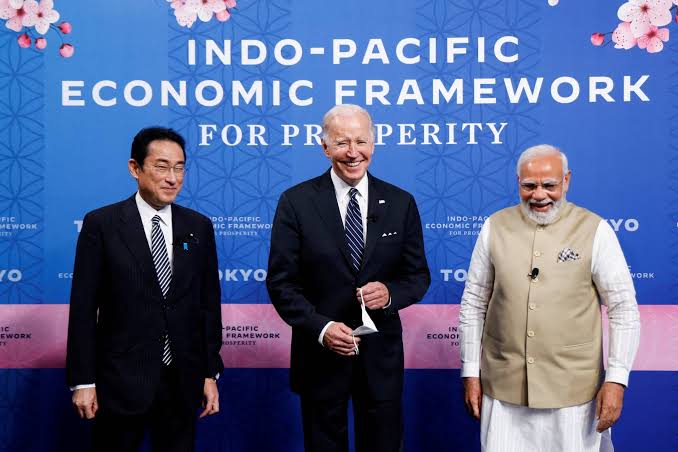
Suman Kumari
In 2025, India launched an unprecedented revamping of its fiscal policy framework, which comprises far-reaching tax reforms, along with a rethinking of Centre-State fiscal relations. These transformative developments stem from the Union Budget 2025-26, and the draft Income Tax Bill 2025, for the purposes of simplifying taxation, providing relief for the middle classes, and deepening fiscal federalism.—There are no further edits .The Simplification of Tax Legislation: The Income Tax Bill 2025Introduced in Lok Sabha on February 13, 2025 the Income Tax Bill 2025 seeks to replace the archaic Income Tax Act of 1961. The primary aims are to simplify tax legislation, reduce litigation, and make the tax code simple enough to be accessible to taxpayers. The principal provisions include:Lessening Complexity: The legislation proposes to cut the number of sections by 25-30% making tax code less cumbersome and more taxpayer friendly .Retention of Key Provisions: While making more accessible the language of tax law the Bill will seek to keep the majority of definitions and tax rates to allow for a continuation and stability in tax policy.Implementation Date: The new legislation is supposed to be implemented for April 1, 2026, allowing enough time for the transition.
—India’s 2025 Tax Reforms: A Paradigm Shift in Fiscal PolicyIn 2025, India initiated a landmark overhaul of its fiscal policy, characterized by sweeping tax reforms and a reinterpretation of Centre-State fiscal relations. These events, driven by the Union Budget 2025-26 and the draft Income Tax Bill, 2025, seek to streamline taxation, grant relief to the middle class, and strengthen fiscal federalism.—There are no more changes to make.
Simplification of Tax Legislation: The Income Tax Bill, 2025Presented in the Lok Sabha on February 13, 2025, the Income Tax Bill, 2025 aims to supersede the vintage Income Tax Act of 1961. The main aim is to simplify tax laws, decrease litigation, and simplify the tax code to be understood by taxpayers. Major provisions are:Reduction in Complexity: The bill proposes to cut down the number of sections by 25-30%, making the tax code more straightforward and user-friendly .Retention of Core Provisions: While simplifying the language, the bill retains most definitions and tax rates, ensuring continuity and stability in tax policy .Effective Date: The new legislation is slated to come into effect from April 1, 2026, providing ample time for transition .——Union Budget 2025-26: Tax Reductions and Economic StimulusThe Union Budget 2025-26 announced by Finance Minister Nirmala Sitharaman included important details to increase customer spending and provide relief for tax payers:New Tax Slabs: In the new tax regime, under ₹12 lakh of annual income in the new tax regime will be exempt, up from ₹7 lakh.Standard Deduction: An additional standard deduction has been introduced to the existing deduction in order to reduce taxable salary for salaried individuals, with the new addition of ₹75,000.Optional Old Regime: Taxpayers also have the option of remaining in the old tax regime which allows the verification of deductions, exemptions for those continuing to migrate to the old method.To put things in perspective, these changes are expected to incur a revenue loss of about ₹1 trillion/year, which is expected to lead to faster economic growth to higher consumer spending.
—Additional DetailsStrengthening Fiscal Federalism: Demand from States for Higher Revenue Sharing
The 16th Finance Commission chaired by Arvind Panagariya is studying the Centre-state tax revenue sharing. Most states have petitioned for a higher share of the 50% versus the current 41% share, arguing the need for more financial autonomy in order to meet developmental objectives.—
Union Budget 2025-26: Tax Reductions and Economic StimulusThe Union Budget 2025-26 announced by Finance Minister Nirmala Sitharaman included important details to increase customer spending and provide relief for tax payers:New Tax Slabs: In the new tax regime, under ₹12 lakh of annual income in the new tax regime will be exempt, up from ₹7 lakh.Standard
Deduction: An additional standard deduction has been introduced to the existing deduction in order to reduce taxable salary for salaried individuals, with the new addition of ₹75,000.
Optional Old Regime: Taxpayers also have the option of remaining in the old tax regime which allows the verification of deductions, exemptions for those continuing to migrate to the old method.To put things in perspective, these changes are expected to incur a revenue loss of about ₹1 trillion/year, which is expected to lead to faster economic growth to higher consumer spending.—Additional DetailsStrengthening Fiscal Federalism: Demand from States for Higher Revenue Sharing.
The 16th Finance Commission chaired by Arvind Panagariya is studying the Centre-state tax revenue sharing. Most states have petitioned for a higher share of the 50% versus the current 41% share, arguing the need for more financial autonomy in order to meet developmental objectives.—Uttar Pradesh is particularly focused on the importance of aligning allocation criteria with population and effort to add directly to taxes, and cites its compliance with a standard of fiscal responsibility and strong growth in tax collection.–
-Conclusion
India’s tax reforms for 2025 are a significant step towards a more inclusive and functional fiscal system with the simplification of tax code, big relief for the middle class, and by aligning the fiscal needs of the states with the payment of taxes, the government would hope for inclusive growth and development of the federal structure.—

